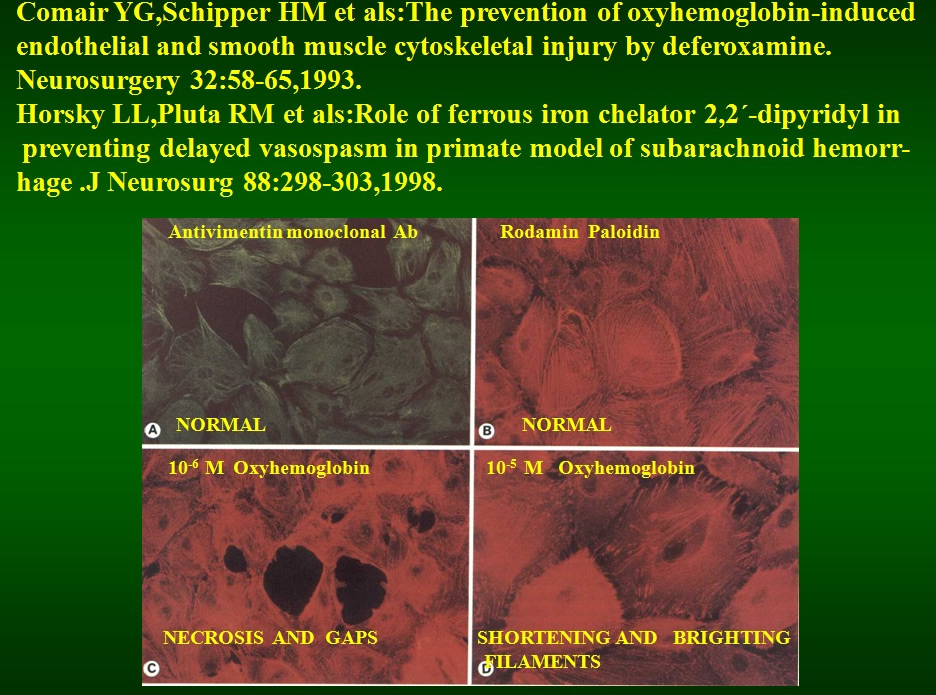
Babaji

Discussions:
Cerebral vasospasm-pathophysiological basis for its treatment
Question
Dear Professor Quintana!
How do you explain that the incidence of symptomatic vasospasm is lower in aneurysmal SAH cases treated by means of endovascular technique than in those managed by clipping? Endovascular operations do not reduce either the clot volume or do not restore CSF pathways blocked by clot formation.
With best regards,
Pecs, Hungary
Answer
Thank you for your question Dr. T.Doczi
I mentioned that it is a controvertial area, because only one paper, and school, shows such results.
The answer, as with many controvertial results in clinical trials related with cerebral vasospasm and delayed ischemic deficit is not definitive.
One hypothesis is that during the endovascular treatment we “don´t touch” the brain, as surgeons do during clipping, and washing out blood clots from the basal cisterns. This hypothesis could reinforce the thesis of Tamargo et al.. from the John Hopkins University School of Medicine , where they think the cerebral vasospasm is like a global problem over the brain, where we can find a real “Cerebritis”. The Inflammatory response to a high pressure blood entering into the subarachnoid space.
However, there are a many papers showing that only with early surgery (between 48 hours after the aneurysms rupture), and only opening and washing out the hemato-cisterns, the symptomatic vasospasm decrease.
Once again, in cerebral vasospasm we can find results for everyone
Thanks you again for your interesting question.
Valparaiso, Chile
Comment
I agree with you about removal and washing of blood from subarachnoid space during anurism clips operations May decreased whole brain damage.
Iron which released from red blood cells is essential element in Heber-weiss reaction.
The Heber-weiss reaction generates •OH (hydroxyl radicals) from H 2 O 2 (hydrogen peroxide) and superoxide (•O 2 -). This reaction can occur in cells and is therefore a possible source for oxidative stress. The reaction is very slow, but is catalyzed by iron.
Thanks
Yard, Iran
Comment
Dear Dr Parizi
When I came again to Japan in 1987, I knew a new line to stop the Free radical injury, in the initial stage of the process. In SAH and Trauma. And one of the lines was to use Iron chelators agents. Later, in two very well known journals, I could see research works, as follows:
Comair YG,Schipper HM et als:The prevention of oxyhemoglobin-induced endothelial and smooth muscle cytoskeletal injury by deferoxamine.Neurosurgery 32:58-65,1993.
Horsky LL,Pluta RM et als:Role of ferrous iron chelator 2,2´-dipyridyl in
preventing delayed vasospasm in primate model of subarachnoid hemorrhage .J Neurosurg 88:298-303,1998.
But ,again, I couldn´t know more if these research works could be applyed in clinical cases.
Do you have more "fresh" information???

Thanks for your comments.
Valparaiso, Chile
| Contact | The 6th AINC | To join the NSRL | Annals of Neurosurgery | ©1998-2011, Neurological Surgery Research ListServ